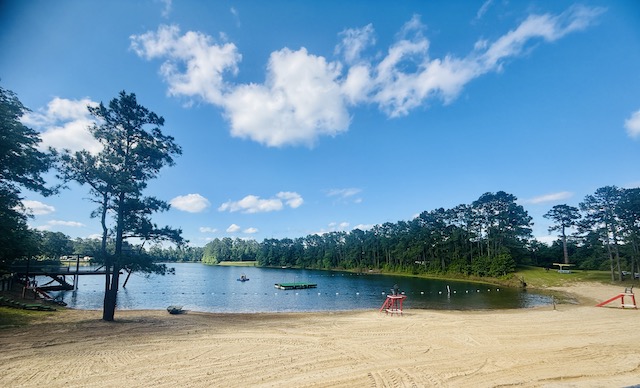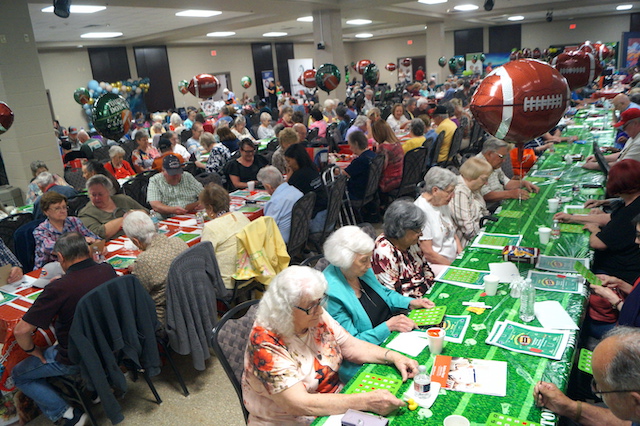Smith reunites with life-saving first responders
Published 10:05 am Wednesday, February 24, 2016

- Bobby Tingle/ The Orange Leader Anna Smith, left, wife of Michael Smith, right, recounts the events on the day her husband’s life was saved due to the quick response of witnesses and first responders when he experienced “witness cardiac arrest” last year.
By Bobby Tingle
LITTLE CYPRESS — Michael Smith is one of four success stories from 2015.
“My workout was too strenuous,” Smith said. “I was doing bleachers and running sprints. I had no warning, my heart stopped beating and I fell to the ground.”
According to Smith that is when others jumped to his aid, though at the time he was clueless. Gratefully this event was one that first responders call a “witness cardiac arrest”. A quick response is the most important aspect of the response that renders the best outcome when a patient experiences cardiac arrest. Smith was blessed that day in December with just such a response. Others on the track at LCM high school formed the witness cardiac arrest team leading to a wonderful outcome.
Coach Cory Parsons is a football coach at LCM high school. He also teaches Engineering. Parsons was on the track the same time as Smith. He had just begun his workout when he noticed Smith on the ground. At first it seemed he may be doing pushups then Parsons realized he was not moving. After checking Smith for responsiveness he began CPR, cardio pulmonary resuscitation. Parsons provided that quick response. He is also quick to credit others.
“It takes a team,” Parsons said. “I may have been the first person to respond but it was a team effort.”
When Parsons began administering CPR West Orange Police Chief, Michael Stelly approached. He called 911 to seek the help of first responders. Soon another individual, David Tyler, joined the team effort and began to help administer CPR.
Acadian Ambulance Service responded to the 911 call made by Stelly. Kendra McKinley, Paramedic, and Michael Cummings, EMT, who work for Acadian Ambulance service arrived and joined the team. Additional first responders including the fire department and constable arrived along with McKinley and Cummings.
Paramedics are the responsible party in these emergency field treatment situations. McKinley accepted that role upon arrival and along with Cummings took over treatment. McKinley, while directing the effort of the team, administered other necessary life saving treatments.
“We had four saves in the last quarter of 2015, which is rare,” Jon Clingaman, Operations Manager with Acadian Ambulance Services said. “The national success rate is less than ten percent. We are at twenty-one per cent.”
Their success is due to the team approach they call CPRHD, according to Clingaman. For the first 8-10 minutes a two-man team will maintain compressions to continue the flow of oxygenated blood to the vital parts of the patients body. They do not administer breathing treatment during that initial period. One person will compress for two minutes while the other performs other duties such as preparing meds and monitoring vital signs.
Witnesses to medical emergencies are sometimes confused by first responders actions. Most witnesses expect the responders to transport the patient as quickly as possible to the hospital. But treatment in the field during the thirty minutes before leaving to go to the hospital is vital. The first thirty minutes and the aid that is received by the patient in the field is life saving.
The American Heart Association updated their treatment standards in 2014. In response to those revisions Acadian adapted their response protocols. Creation of the CPRHD team approach was one of those adaptations. Clingaman and his staff are delighted with the results in the field.
For Smith, this approach meant returning to work three weeks later.
Anna Smith, wife of Michael Smith, was overwhelmed with emotion as she thanked the team assembled Monday morning at the LCM track to celebrate and reunite.
“Every time I hear a siren now I pray for the workers also”, Smith’s wife said through tears.
“I appreciate every one of ya’ll”, Smith concluded.
It was a happy reunion.





